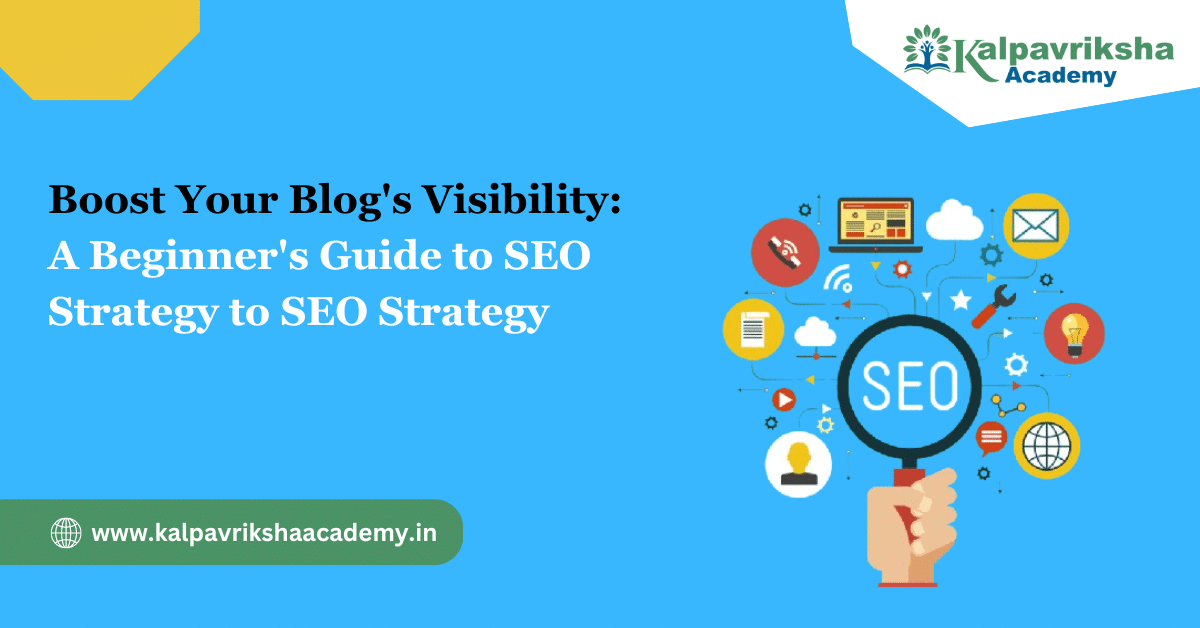Boost Your Blog’s Visibility: A Beginner’s Guide to SEO Strategy
In the wide world of the internet, starting a blog is just the beginning. Putting into practice a strong SEO strategy is essential to ensuring that your blog achieves its maximum potential and is seen by the appropriate audience. Like a magical tool, search engine optimization (SEO) makes your blog content shine on search engines. We’ll go over seven crucial steps in this post to make your blog’s content search engine friendly.
Best SEO Strategies For Optimizing Blog Content

Why Content Is Important For SEO
-
Write about Topics People Are Searching For
The foundation of a successful blog lies in understanding what your audience is searching for. Conduct keyword research to identify topics that align with the interests and queries of your target audience. Tools like Google Keyword Planner can help you discover relevant keywords related to your niche. Selecting topics people are actively searching for will increase the chances of your blog being discovered.
-
Get the Search Intent Right
Search engines aim to provide users with the most relevant results based on their search queries. Understanding the search intent behind keywords is crucial. Ensure that your content aligns with the user’s intent, whether it’s informational, navigational, or transactional. For example, if someone is searching for an “SEO course,” your content should provide information on available courses rather than selling a product.
-
Create Quality Content
Content is king in the world of SEO. Craft high-quality, informative, and engaging content that adds value to your readers. Google values content that solves problems, answers questions, or educates the audience. Include your target keywords naturally within the content, maintaining a balance that ensures readability. Well-crafted content not only attracts readers but also earns recognition from search engines.
-
Do On-Page SEO
On-page SEO involves optimizing various elements on your blog to enhance its visibility on search engines. This includes optimizing title tags, meta descriptions, and header tags with relevant keywords. Make sure your URLs are user-friendly and descriptive. Use descriptive alt text for images, as this not only improves accessibility but also provides additional information for search engines.
-
Make Your Blogs Easy to Read
User experience is a crucial factor in SEO. Make your blogs easy to read by using clear headings, short paragraphs, and bullet points. Break down complex information into digestible chunks, making it accessible to a wider audience. Additionally, use a readable font and ensure your website is mobile-friendly, as a growing number of users access content through mobile devices.
-
Monitor Technical SEO Issues
Technical SEO involves optimizing the technical aspects of your website to improve its performance on search engines. Regularly monitor and address technical issues such as page loading speed, broken links, and crawl errors. A fast and well-optimized website not only improves user experience but also contributes to higher search engine rankings.
-
Build Backlinks
Backlinks, or links from other websites to yours, are like votes of confidence in the eyes of search engines. Building a strong backlink profile can significantly improve your blog’s authority and search engine rankings. Reach out to relevant websites in your niche for guest posting opportunities or collaborations. Ensure that the backlinks are from reputable sources, as quality matters more than quantity.
-
Update Older Content
Don’t let your older blog posts gather dust. Periodically revisit and update them with fresh information, new insights, or additional resources. Search engines favor up-to-date and relevant content. By keeping your older posts current, you not only maintain their SEO value but also provide more value to your audience.
Conclusion
In conclusion, implementing a solid SEO strategy is essential for optimizing your blog content on search engines. By focusing on topics people are searching for, understanding search intent, creating quality content, doing on-page SEO, ensuring readability, monitoring technical issues, building backlinks, and updating older content, you’ll be on the right track to improving your blog’s visibility.
Accept the dynamic nature of SEO by staying up to date on market developments and new trends. Use social media to interact with your audience and build a community around your content.
Analyze your keywords’ performance on a regular basis and modify your plan as necessary. Investigate novel content formats to expand your audience, like podcasts and videos. Additionally, think about using analytics tools to learn more about user behavior and adjust your strategy accordingly. Recall, sustained visibility and success in SEO are guaranteed by taking a proactive approach.
And remember, SEO is a journey, not a destination, so stay committed to refining and adapting your strategy as the digital landscape evolves. Consider enrolling in an SEO course online or SEO course certification to deepen your understanding and stay ahead in the ever-changing world of search engine optimization.
FAQs
1)What is SEO, and why is it important for a blog?
SEO, or Search Engine Optimization, is the practice of optimizing a website or blog to improve its visibility on search engines like Google. It is essential for a blog because higher visibility means more traffic, leading to increased readership and potential opportunities.
2) How do you find topics that people are searching for?
Conduct keyword research using tools like Google Keyword Planner or other SEO tools. Identify relevant keywords and topics related to your blog’s niche that have a decent search volume.
3)What is search intent, and why is it crucial for SEO?
Search intent refers to the reason behind a user’s search query, such as seeking information, making a purchase, or navigating to a specific website. Understanding search intent is crucial for creating content that aligns with what users are looking for, enhancing the overall user experience.
4)How can you make your blogs easy to read for both users and search engines?
Improve readability by using clear headings, short paragraphs, and bullet points. Ensure a readable font, break down complex information, and optimize images with descriptive alt text. Additionally, make sure your website is mobile-friendly.
5)What is on-page SEO, and how can you implement it?
On-page SEO involves optimizing individual pages on your website. This includes optimizing title tags, meta descriptions, header tags, and incorporating relevant keywords naturally into the content. Focus on creating a positive user experience.
6)Why is building backlinks important, and how can you do it effectively?
Backlinks are crucial for SEO as they indicate the credibility and authority of your content. Build backlinks by guest posting, collaborating with other websites in your niche, and ensuring that the links come from reputable sources.
7)What are some common technical SEO issues to monitor?
Keep an eye on technical issues such as page loading speed, broken links, and crawl errors. Addressing these issues ensures a well-optimized website that contributes to a positive user experience and higher search engine rankings.










